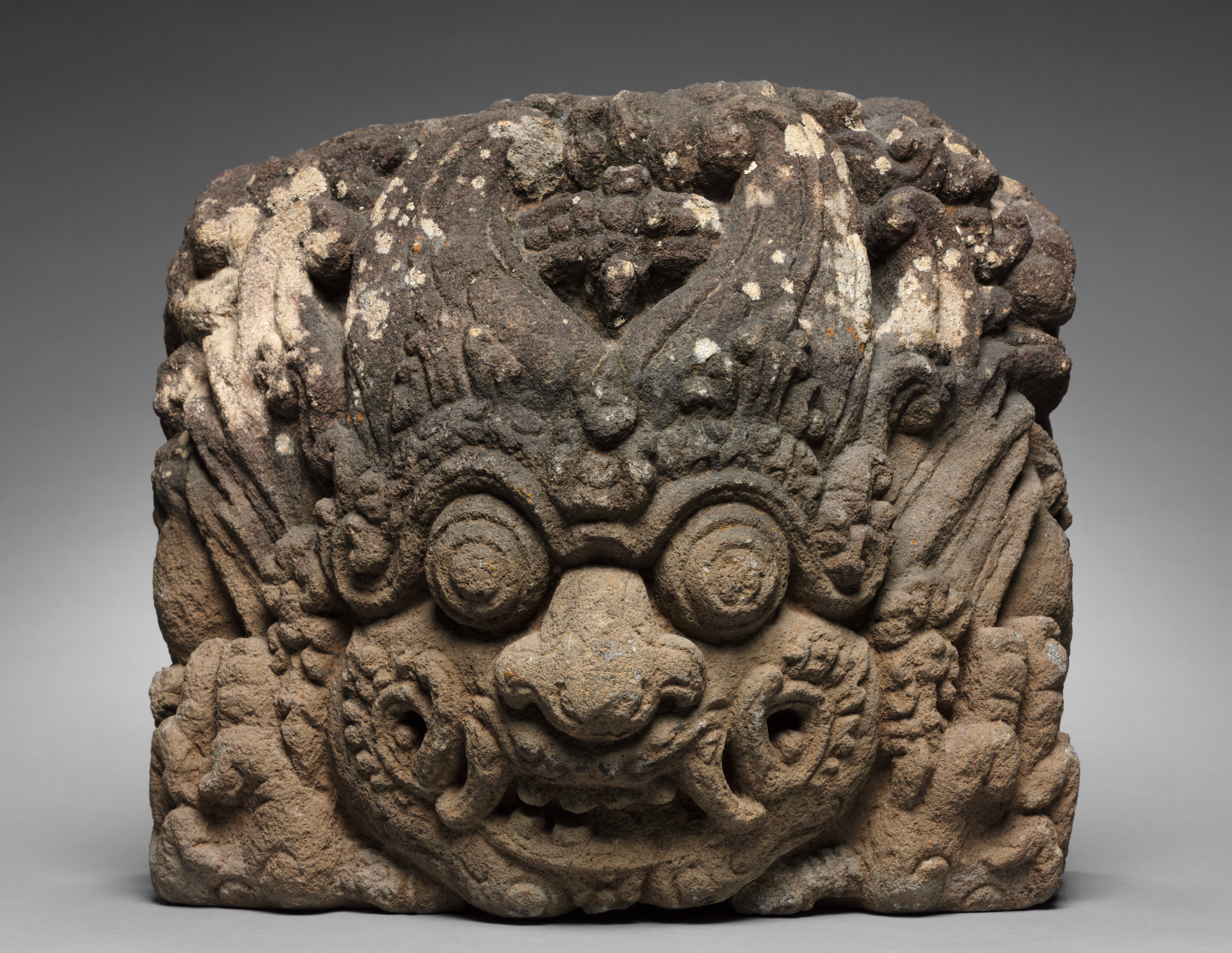The Cleveland Museum of Art
Collection Online as of May 7, 2024

Architectural Sculpture: Face of Time (Kala-mukha)
1100s–1300s
Overall: 40 x 45.5 x 31 cm (15 3/4 x 17 15/16 x 12 3/16 in.)
Location: 244 Indian and Southeast Asian
Did You Know?
The fiercest looking Kala masks are from eastern Java, made between the 10th to 15th century.Description
The bulging eyes and curved fangs of Kala emphasize the ferocity of the figure who stands for Time and Death, the devourer of all creation. Placed above the entry to an Indonesian temple, Kala serves both to protect the site and indicate a symbolic rebirth for those who pass beneath to enter the sacred space. Though related to the faces of glory on monuments in India, Kala and the volcanic stone from which it has been carved are distinctively Javanese.- ?–1988(Spink & Son, Ltd., London, England, sold to the Cleveland Museum of Art)1988–The Cleveland Museum of Art, Cleveland, OH
- Lee, Sherman E. “The Year in Review for 1975.” The Bulletin of the Cleveland Museum of Art 63, no. 2 (February 1976): 31–71. Mentioned: p. 71, no. 168 www.jstor.orgThe Cleveland Museum of Art. Handbook of the Cleveland Museum of Art/1978. Cleveland, OH: The Cleveland Museum of Art, 1978. Reproduced: p. 321 archive.org
- Year in Review: 1975. The Cleveland Museum of Art, Cleveland, OH (organizer) (February 3-March 7, 1976).
- {{cite web|title=Architectural Sculpture: Face of Time (Kala-mukha)|url=false|author=|year=1100s–1300s|access-date=07 May 2024|publisher=Cleveland Museum of Art}}
Source URL:
https://www.clevelandart.org/art/1975.104